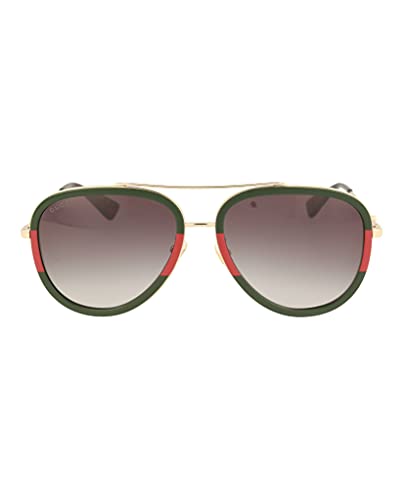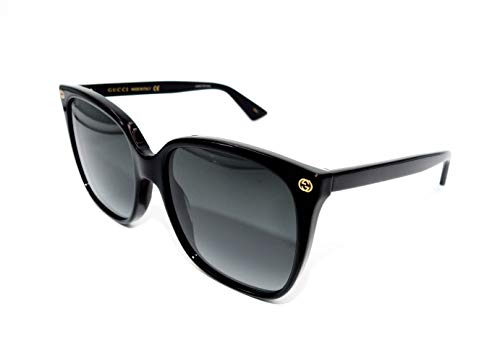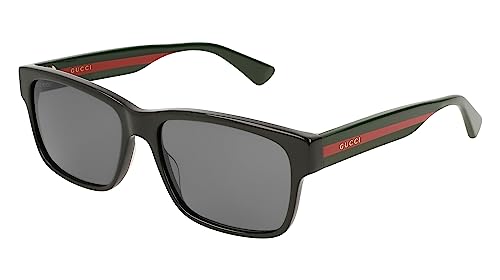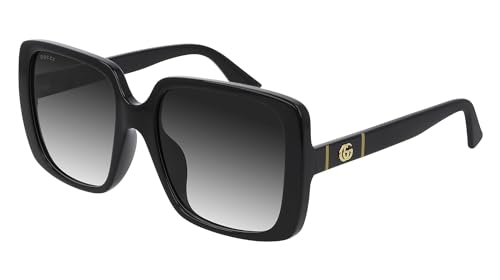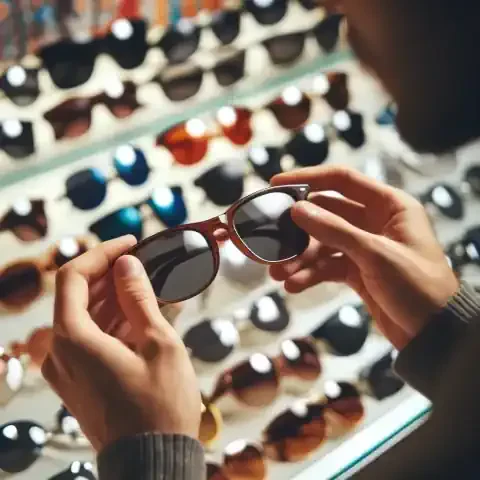Introduction
Sunglasses are more than just a fashion accessory; they're essential for maintaining eye health and protecting your vision from the harmful effects of ultraviolet (UV) radiation. While they undoubtedly add a stylish flair to your look, their primary function is to shield your eyes from the sun's damaging rays.
Importance of Sunglasses Beyond Fashion
Beyond making a fashion statement, sunglasses play a crucial role in safeguarding your eyes from both short-term discomfort and long-term damage. UV radiation from the sun can lead to a variety of eye problems, including photokeratitis (sunburn of the cornea), cataracts, and age-related macular degeneration.
Photokeratitis, often referred to as "snow blindness," can occur after spending extended periods in bright sunlight without proper eye protection. Symptoms may include eye pain, redness, tearing, and a gritty sensation, akin to having sand in your eyes. While photokeratitis is typically temporary and reversible, it underscores the importance of shielding your eyes from excessive UV exposure.
Cataracts, a common age-related eye condition, are characterized by clouding of the eye's natural lens. Prolonged UV exposure is a significant risk factor for cataract development. By wearing sunglasses that block harmful UV rays, you can help reduce your risk of developing cataracts later in life.
Age-related macular degeneration (AMD) is a leading cause of vision loss in older adults. This progressive condition affects the macula, the central part of the retina responsible for sharp, central vision. While the exact cause of AMD is unknown, exposure to UV radiation is believed to be a contributing factor. By wearing sunglasses with UV protection, you can help safeguard your macula and reduce your risk of developing AMD as you age.
Overview of Key Factors When Purchasing Sunglasses
When it comes to buying sunglasses, there are several key factors to consider to ensure you're getting the best protection for your eyes:
UV Protection: Look for sunglasses that provide 100% UV protection to shield your eyes from both UVA and UVB rays.
Lens Quality: Opt for high-quality lenses that offer excellent clarity and durability.
Lens Color and Tint: Consider your lifestyle and activities when selecting lens color and tint options.
Frame Style and Materials: Choose a frame style and material that complements your face shape and offers comfort and durability.
Fit and Comfort: Ensure your sunglasses fit properly and comfortably to provide optimal protection and wearability.
Polarization: Consider polarized lenses to reduce glare and improve visual comfort, especially in bright sunlight or when on water or snow.
Brand Reputation and Warranty: Research reputable sunglass brands that offer reliable products and excellent warranty coverage.
Budget Considerations: Determine your budget and balance price with quality and features when selecting sunglasses.
Care and Maintenance: Learn how to properly clean, store, and maintain your sunglasses to prolong their lifespan and effectiveness.
By carefully considering these factors, you can make an informed decision when purchasing sunglasses and prioritize both style and eye protection. In the following sections, we'll delve deeper into each of these factors to help you find the perfect pair of sunglasses for your needs.
Understanding UV Protection
Explanation of UV Radiation and Its Effects on Eyes
UV radiation, a type of electromagnetic radiation emitted by the sun, is classified into three main types: UVA, UVB, and UVC. While the Earth's atmosphere blocks most UVC radiation, both UVA and UVB rays can penetrate the atmosphere and reach the Earth's surface.
UVA rays, which account for the majority of UV radiation reaching the Earth, can penetrate deep into the skin and eyes, leading to premature aging of the skin and increasing the risk of skin cancer. UVB rays primarily affect the outer layers of the skin and eyes, contributing to sunburn, cataracts, and other eye conditions.
Prolonged exposure to UV radiation can cause various eye problems, including:
Photokeratitis: Similar to sunburn of the skin, photokeratitis is a painful condition characterized by inflammation of the cornea, often referred to as "snow blindness."
Cataracts: UV exposure is a significant risk factor for cataract development, a condition characterized by clouding of the eye's natural lens, leading to vision impairment.
Age-related Macular Degeneration (AMD): UV radiation may contribute to the development and progression of AMD, a leading cause of vision loss in older adults affecting the macula, the central part of the retina.
Importance of Selecting Sunglasses with Adequate UV Protection
Choosing sunglasses that provide 100% UV protection is essential for safeguarding your eyes from the harmful effects of UV radiation. When shopping for sunglasses, look for labels or stickers indicating UV protection, such as "100% UV protection" or "UV400." These designations signify that the lenses block both UVA and UVB rays, offering comprehensive protection for your eyes.
Tips for Identifying Sunglasses with Effective UV Protection
To ensure that your sunglasses offer adequate UV protection, consider the following tips:
Check Labels and Stickers: Look for labels or stickers indicating UV protection, preferably stating "100% UV protection" or "UV400."
Visit Reputable Retailers: Purchase sunglasses from reputable retailers or optometrists to ensure authenticity and quality.
Consider Lens Material: Select lenses made from materials specifically designed to block UV radiation, such as polycarbonate or high-index plastics.
Beware of Price: While price isn't always an indicator of UV protection, be cautious of extremely cheap sunglasses, as they may lack adequate UV-blocking properties.
Consult with Eye Care Professionals: If in doubt, consult with an eye care professional who can recommend sunglasses with reliable UV protection.
By prioritizing sunglasses with effective UV protection, you can help reduce your risk of eye damage and maintain optimal eye health for years to come.
Lens Material and Quality
Different Lens Materials and Their Pros and Cons
Polycarbonate: Polycarbonate lenses are lightweight and highly impact-resistant, making them ideal for sports and outdoor activities. They also offer built-in UV protection and are less likely to shatter upon impact, enhancing safety.
CR-39 Plastic: CR-39 lenses are affordable and provide excellent optical clarity. While they are not as impact-resistant as polycarbonate, they are lighter and offer better optical performance, making them suitable for everyday use.
High-Index Plastic: High-index plastic lenses are thinner and lighter than standard plastic lenses, making them ideal for individuals with higher prescriptions. However, they may be more prone to scratching and require additional coatings for scratch resistance and UV protection.
Glass: Glass lenses offer exceptional optical clarity and scratch resistance. However, they are heavier and more prone to shattering upon impact, making them less suitable for sports and outdoor activities.
Impact of Lens Quality on Clarity and Durability
The quality of lenses significantly impacts visual clarity and durability. High-quality lenses should provide distortion-free vision and withstand daily wear and tear. Scratches, distortion, and poor optical quality can compromise vision and reduce the lifespan of sunglasses.
Choosing the Right Lens Material for Your Needs and Lifestyle
Consider your lifestyle and activities when selecting the most suitable lens material for your sunglasses:
Sports and Outdoor Activities: Opt for impact-resistant materials such as polycarbonate for enhanced safety during sports and outdoor adventures.
Everyday Wear: CR-39 plastic lenses offer excellent optical clarity and are suitable for everyday use. They provide a good balance of performance and affordability.
High Prescription: Individuals with higher prescriptions may benefit from high-index plastic lenses, which are thinner and lighter than standard plastic lenses, providing improved aesthetics and comfort.
By choosing the right lens material for your needs and lifestyle, you can ensure optimal visual performance, comfort, and durability from your sunglasses.
Lens Color and Tint
Effects of Lens Color on Light Transmission
The color of sunglass lenses affects how much light is transmitted through them and can influence visual clarity, contrast, and perception of colors. Different lens colors are designed for specific lighting conditions and activities.
Gray Lenses: Gray lenses offer neutral color perception and maintain true-to-life colors. They are suitable for a wide range of lighting conditions and provide excellent glare reduction without distorting colors.
Brown/Amber Lenses: Brown or amber lenses enhance contrast and depth perception, making them ideal for activities such as driving and outdoor sports. They are particularly effective in reducing glare in variable light conditions.
Green Lenses: Green lenses provide good color balance and contrast enhancement, making them versatile for various activities. They are effective in reducing glare and eye fatigue, especially in bright sunlight.
Yellow/Orange Lenses: Yellow or orange lenses enhance depth perception and visual contrast, making them suitable for low-light conditions such as fog or overcast days. They can also improve visibility in hazy or cloudy environments.
Rose/Copper Lenses: Rose or copper lenses enhance contrast and depth perception, making them ideal for activities such as golfing, fishing, and skiing. They provide good color balance and are effective in reducing glare in medium to bright light conditions.
Popular Tint Options and Their Purposes
Polarized Lenses: Polarized lenses contain a special filter that blocks horizontal glare, such as glare reflecting off water, snow, or flat surfaces. They improve visual comfort and reduce eye strain, making them ideal for outdoor activities and driving.
Mirrored Lenses: Mirrored lenses feature a reflective coating that reduces glare by reflecting light away from the eyes. They offer added protection against bright sunlight and can enhance visual clarity in high-glare environments.
Gradient Lenses: Gradient lenses are tinted from top to bottom, with darker tint at the top and lighter tint at the bottom. They provide sun protection while allowing more light transmission at the bottom for clear vision. Gradient lenses are suitable for activities where overhead sunlight is a concern, such as driving or skiing.
Considerations for Selecting the Most Suitable Lens Tint
When choosing the most suitable lens tint for your sunglasses, consider the following factors:
Lighting Conditions: Select lens colors and tints based on the predominant lighting conditions during your activities.
Activity Type: Choose lens colors that enhance visual clarity and contrast for specific activities, such as driving, skiing, or water sports.
Personal Preference: Consider your personal preference for color perception and comfort when selecting lens tints.
By understanding the effects of lens color and tint, you can choose sunglasses that provide optimal visual performance and comfort for your preferred activities and lighting conditions.
Frame Styles and Materials
Overview of Popular Frame Styles
Aviator: Aviator sunglasses feature a teardrop-shaped lens design and thin metal frames. Originally developed for pilots, they offer a classic and timeless look that complements various face shapes.
Wayfarer: Wayfarer sunglasses are characterized by a distinctive trapezoidal frame shape with thick rims. They have a retro appeal and are suitable for both casual and formal occasions, making them a versatile choice.
Wraparound: Wraparound sunglasses feature curved frames that extend around the sides of the face, providing maximum coverage and protection from sunlight and wind. They are popular for outdoor sports and activities.
Round: Round sunglasses have circular lenses and frames, reminiscent of vintage styles. They offer a unique and trendy look, suitable for individuals seeking a fashion-forward aesthetic.
Cat-Eye: Cat-eye sunglasses feature upswept outer edges that evoke a feline-inspired shape. They are feminine and stylish, adding a touch of glamour to any ensemble.
Comparison of Different Frame Materials
Plastic: Plastic frames are lightweight and come in a wide range of colors and styles. They are affordable and offer versatility in design, making them popular among fashion-conscious individuals.
Metal: Metal frames are durable and offer a sleek and sophisticated appearance. They are lightweight and comfortable to wear, making them suitable for everyday use and formal occasions.
Acetate: Acetate frames are made from a plant-based material that is lightweight, durable, and hypoallergenic. They offer rich color options and intricate patterns, allowing for unique and customizable designs.
Titanium: Titanium frames are lightweight, corrosion-resistant, and exceptionally strong. They are hypoallergenic and ideal for individuals with sensitive skin or metal allergies.
Combination: Combination frames feature a mix of materials, such as metal and plastic or metal and acetate. They offer the benefits of both materials, combining durability, style, and comfort.
Factors to Consider When Choosing Frames
Face Shape: Consider your face shape when selecting sunglasses to ensure a flattering fit. Different frame styles complement various face shapes, so choose frames that balance and enhance your features.
Comfort: Ensure that the sunglasses fit comfortably and securely without pinching or slipping. Adjustable nose pads and temple tips can improve comfort and ensure a customized fit.
Durability: Choose frames made from high-quality materials that can withstand daily wear and tear. Look for sturdy construction and robust hinges for long-lasting durability.
Style Preference: Select frames that reflect your personal style and fashion preferences. Whether you prefer classic elegance, modern minimalism, or bold statement pieces, choose sunglasses that resonate with your aesthetic.
Functionality: Consider the intended use of the sunglasses and select frames that meet your functional needs. For outdoor activities, prioritize frames that offer adequate coverage, stability, and protection.
By considering these factors when choosing frame styles and materials, you can find sunglasses that not only complement your appearance but also provide comfort, durability, and functionality for your lifestyle.
Fit and Comfort
Importance of Proper Fit for Comfort and Effectiveness
The fit of sunglasses is crucial for both comfort and effectiveness in providing adequate eye protection. Ill-fitting sunglasses can cause discomfort, headaches, and even impair vision due to improper alignment or pressure points.
Eye Coverage: Sunglasses should adequately cover your eyes and surrounding areas to block out sunlight from all angles. Ensure that the lenses are wide enough and tall enough to provide sufficient coverage without gaps.
Nose Bridge Fit: The nose bridge of the sunglasses should sit comfortably on your nose without pinching or sliding down. Adjustable nose pads can help achieve a customized fit and prevent discomfort.
Temple Length: The temples (arms) of the sunglasses should extend past your ears and curve gently around them for a secure fit. Avoid sunglasses with temples that are too tight or too loose, as they can cause pressure points or slip off.
Weight Distribution: Sunglasses should distribute their weight evenly across your face without feeling too heavy on your nose or ears. Lightweight frames and well-balanced designs contribute to enhanced comfort during prolonged wear.
Stability: Sunglasses should stay securely in place during movement and activities. Test the stability of the sunglasses by shaking your head gently and performing simple movements to ensure they remain in position.
Tips for Assessing Sunglass Fit
Try Before You Buy: Always try on sunglasses before making a purchase to assess the fit and comfort. Visit a reputable retailer and explore different styles and brands to find the perfect fit for your face shape and preferences.
Check Alignment: Ensure that the sunglasses sit straight and level on your face without tilting to one side. Misaligned sunglasses may indicate poor craftsmanship or improper sizing.
Evaluate Pressure Points: Pay attention to any pressure points or discomfort around your nose, temples, or behind your ears. Adjust the nose pads or temples as needed to alleviate pressure and improve comfort.
Consider Adjustability: Look for sunglasses with adjustable features, such as nose pads and temple tips, to customize the fit to your liking. Adjustable components can enhance comfort and ensure a secure fit for various face shapes.
Ask for Assistance: Don't hesitate to seek assistance from sales associates or opticians when selecting sunglasses. They can provide expert guidance on fit, comfort, and style to help you make an informed decision.
Adjustability Features to Look For
Nose Pads: Sunglasses with adjustable nose pads allow you to customize the fit and prevent slippage or discomfort on the bridge of your nose.
Temple Tips: Sunglasses with flexible or adjustable temple tips can be bent or shaped to conform to the contours of your ears, improving comfort and stability.
Spring Hinges: Sunglasses with spring hinges offer flexibility and durability, allowing the temples to flex outward slightly for a snug yet comfortable fit.
Interchangeable Lenses: Some sunglasses feature interchangeable lenses that allow you to swap out lenses of different tints or designs to suit varying lighting conditions and activities.
By prioritizing fit and comfort when selecting sunglasses, you can ensure optimal wearability and effectiveness in protecting your eyes from harmful UV radiation and glare. A well-fitting pair of sunglasses not only enhances comfort but also enhances your overall enjoyment of outdoor activities and daily wear.
Polarization and Glare Reduction
Explanation of Polarization and Its Benefits
Polarized sunglasses are equipped with special lenses that contain a built-in filter to block horizontally polarized light, such as glare reflecting off water, snow, or flat surfaces. This unique feature offers several benefits for visual comfort and clarity, especially in bright sunlight and high-glare environments.
Reduced Glare: Polarized lenses effectively reduce glare from reflective surfaces, such as water, snow, sand, and roads. By blocking horizontally polarized light waves, polarized sunglasses minimize glare, allowing for clearer vision and improved visual comfort.
Enhanced Visual Clarity: By reducing glare and unwanted reflections, polarized lenses enhance visual clarity and contrast. Colors appear more vibrant, details are sharper, and objects are easier to see, particularly in bright sunlight or when surrounded by reflective surfaces.
Reduced Eye Strain: Glare can cause eye strain and fatigue, especially during prolonged exposure to bright sunlight. Polarized sunglasses alleviate eye strain by minimizing glare and providing more comfortable and relaxed vision, making them ideal for outdoor activities and driving.
Improved Safety: Polarized sunglasses enhance safety by improving visibility and reducing distractions caused by glare. Clearer vision enables better depth perception and judgment of obstacles, hazards, and other objects, reducing the risk of accidents and collisions.
Situations Where Polarized Sunglasses Are Particularly Useful
Polarized sunglasses are highly beneficial in various situations and environments where glare is a concern:
Water Activities: Polarized sunglasses are essential for water activities such as fishing, boating, and kayaking. They reduce glare from the water's surface, allowing anglers to see beneath the water's surface and spot fish more easily.
Snow Sports: Polarized sunglasses are indispensable for snow sports such as skiing, snowboarding, and snowshoeing. They minimize glare from snow-covered slopes, improving visibility and reducing the risk of snow blindness.
Driving: Polarized sunglasses enhance safety and comfort while driving by reducing glare from the road surface, car hoods, and other vehicles. They improve visibility and reduce eye strain, particularly during daytime driving and in bright sunlight.
Outdoor Activities: Whether hiking, golfing, or cycling, polarized sunglasses enhance visual clarity and comfort in various outdoor activities. They minimize glare from reflective surfaces, allowing for better focus and enjoyment of the outdoors.
How to Test for Polarization and Ensure Its Effectiveness
Use Polarization Test Cards: Polarization test cards or images are specially designed to assess the effectiveness of polarized sunglasses. By viewing the test card through polarized lenses, you can verify the presence and orientation of polarization.
Observe Glare Reduction: Put on polarized sunglasses and observe the reduction in glare and reflections from shiny surfaces such as water, glass, and metal. Polarized lenses should significantly diminish glare and provide clearer vision.
Rotate Sunglasses: Rotate polarized sunglasses while looking at reflective surfaces to test their polarization filter. As you rotate the lenses, you should notice changes in glare intensity and direction, indicating polarization effectiveness.
Consult with Eye Care Professionals: If unsure about the polarization effectiveness of your sunglasses, consult with an eye care professional or optician. They can provide expert guidance and assistance in selecting polarized sunglasses and verifying their effectiveness.
By understanding the benefits of polarization and when to use polarized sunglasses, you can make informed choices to enhance visual comfort, safety, and enjoyment during various outdoor activities and daily tasks. Polarized sunglasses are a valuable investment for protecting your eyes and optimizing your visual experience in bright and high-glare environments.
Brand Reputation and Warranty
Researching Reputable Sunglass Brands
Established Brands: Look for sunglasses from well-established brands known for their quality, craftsmanship, and reputation for excellence. Brands such as Ray-Ban, Oakley, Maui Jim, and Costa Del Mar have earned trust and recognition for producing high-quality sunglasses.
Customer Reviews: Read customer reviews and testimonials to gauge the satisfaction and experiences of other users with the brand's sunglasses. Websites, forums, and social media platforms are valuable sources of feedback and insights from real customers.
Expert Recommendations: Seek recommendations from eye care professionals, opticians, or fashion experts who can provide guidance on reputable sunglass brands based on their expertise and industry knowledge.
Brand Heritage: Consider the heritage and history of the brand, including its legacy of innovation, design, and commitment to quality. Brands with a long-standing reputation for excellence are more likely to deliver superior sunglasses.
Importance of Warranty Coverage for Long-term Satisfaction
Product Guarantee: A comprehensive warranty provides assurance of product quality and durability, offering peace of mind to consumers. Look for sunglasses with a manufacturer's warranty that covers defects in materials and workmanship.
Repair or Replacement: A warranty allows for repair or replacement of sunglasses in the event of manufacturing defects or damage incurred under normal use. This ensures long-term satisfaction and protection of your investment.
Customer Support: Choose brands with responsive customer support and reliable warranty services. Prompt assistance and efficient resolution of issues contribute to a positive customer experience and satisfaction with the brand.
Extended Warranty Options: Some brands offer optional extended warranty plans for additional coverage beyond the standard warranty period. Evaluate the cost and benefits of extended warranties to determine if they are worthwhile for your needs.
Reviews and Recommendations to Guide Brand Selection
Online Reviews: Explore online reviews and ratings of sunglass brands to assess their reputation, product quality, and customer satisfaction. Websites, blogs, and review platforms provide valuable insights from users and experts.
Professional Endorsements: Pay attention to endorsements and sponsorships from athletes, celebrities, and influencers who endorse the brand's sunglasses. Their support can signify the brand's credibility and appeal to a diverse audience.
Word of Mouth: Seek recommendations from friends, family members, or colleagues who own sunglasses from reputable brands. Personal referrals and word of mouth are trusted sources of information and can help narrow down your options.
Industry Recognition: Consider sunglass brands that have received awards, accolades, or industry recognition for their innovative designs, technological advancements, or commitment to sustainability and social responsibility.
By researching reputable sunglass brands and assessing warranty coverage, you can make informed decisions when selecting sunglasses that offer both quality craftsmanship and long-term satisfaction. Prioritizing brand reputation, warranty protection, and customer feedback ensures that you invest in sunglasses that meet your expectations for style, performance, and durability.
Budget Considerations
Setting a Realistic Budget for Sunglasses
Define Your Budget: Before starting your search for sunglasses, determine a realistic budget based on your financial situation and preferences. Consider how much you're willing to invest in quality sunglasses while balancing other expenses.
Value vs. Price: Evaluate the value proposition of sunglasses rather than solely focusing on the price. While higher-priced sunglasses may offer superior quality and features, affordable options can still provide adequate eye protection and style.
Consider Long-term Investment: View sunglasses as a long-term investment in eye health and comfort. Spending a bit more on quality sunglasses with effective UV protection and durability can pay off in the long run by reducing the risk of eye damage and the need for frequent replacements.
Factor in Additional Costs: Remember to account for potential additional costs such as taxes, shipping fees, and accessories (e.g., cases, cleaning kits). These expenses can impact your overall budget for sunglasses.
Balancing Price with Quality and Features
Quality Construction: Look for sunglasses made from high-quality materials such as durable frames and scratch-resistant lenses. Quality construction ensures longevity and reliability, providing value for your investment.
UV Protection: Prioritize sunglasses with effective UV protection, regardless of price. Ensure that the lenses block 100% of UVA and UVB rays to safeguard your eyes from harmful UV radiation, regardless of the cost.
Features and Technology: Consider the features and technological advancements offered by sunglasses within your budget range. While premium sunglasses may boast advanced features such as polarization, photochromic lenses, or specialized coatings, more affordable options may offer basic yet functional designs.
Brand Reputation: Take into account the reputation and credibility of sunglass brands when evaluating their pricing. Established brands with a history of quality and innovation may command higher prices, reflecting their brand value and heritage.
Tips for Finding Quality Sunglasses within Your Budget Range
Compare Prices: Shop around and compare prices from different retailers to find the best deals on sunglasses. Online marketplaces, department stores, specialty sunglass shops, and clearance sales are potential sources for budget-friendly options.
Look for Discounts and Promotions: Take advantage of discounts, promotions, and seasonal sales to save money on sunglasses. Subscribe to newsletters, follow brands on social media, and sign up for loyalty programs to receive exclusive offers and discounts.
Consider Last Season's Styles: Explore last season's styles or discontinued models, which may be available at discounted prices without compromising on quality or functionality. These sunglasses offer excellent value for budget-conscious shoppers.
Read Reviews and Recommendations: Research sunglasses within your budget range by reading reviews and recommendations from other consumers. Online reviews, forums, and social media platforms can provide valuable insights into the performance and value of budget-friendly sunglasses.
By carefully considering budget considerations and balancing price with quality and features, you can find sunglasses that offer excellent value, style, and functionality without breaking the bank. Prioritize essential features such as UV protection and durability while exploring affordable options that align with your budget and preferences.
Care and Maintenance
Proper Cleaning Techniques to Prolong Lifespan
Use Microfiber Cloth: Clean your sunglasses regularly using a soft, lint-free microfiber cloth to remove dust, dirt, and smudges from the lenses and frames. Avoid using paper towels or rough fabrics, as they may scratch the lenses.
Use Lens Cleaner: Apply a small amount of lens cleaner specifically designed for eyewear onto the microfiber cloth. Gently wipe the lenses in a circular motion, starting from the center and moving outward, to remove any residues or fingerprints.
Avoid Harsh Chemicals: Avoid using household cleaners, alcohol-based solutions, or abrasive substances to clean your sunglasses, as they can damage the lenses and coatings. Stick to gentle lens cleaners formulated for eyewear to maintain optical clarity and integrity.
Rinse with Water: If your sunglasses are exposed to saltwater, sweat, or other contaminants, rinse them under lukewarm water before cleaning to remove any abrasive particles that may scratch the lenses or frames.
Storing Sunglasses to Prevent Damage and Scratches
Use a Protective Case: Store your sunglasses in a sturdy, protective case when not in use to prevent scratches, dents, and damage. Choose a case that fits your sunglasses snugly and provides adequate cushioning and protection.
Avoid Leaving in Hot or Humid Areas: Avoid leaving your sunglasses in hot or humid environments, such as inside a car or near a heat source, as extreme temperatures can warp the frames, distort the lenses, or cause coatings to peel off.
Keep Away from Sharp Objects: Store your sunglasses away from sharp objects, keys, coins, or other abrasive items that may scratch or damage the lenses and frames. Use caution when placing or handling your sunglasses to avoid accidental damage.
Use Lens Covers: Consider using lens covers or protective sleeves to shield the lenses from scratches and abrasions when carrying your sunglasses in a purse, backpack, or pocket.
Importance of Regular Maintenance and Lens Replacement
Inspect for Damage: Regularly inspect your sunglasses for any signs of damage, wear, or deterioration, such as loose screws, damaged hinges, or scratched lenses. Address any issues promptly to prevent further damage and maintain optimal performance.
Replace Worn-Out Lenses: If the lenses of your sunglasses become scratched, pitted, or damaged beyond repair, consider replacing them with new lenses to restore optical clarity and UV protection. Many eyewear retailers offer lens replacement services for various sunglass brands and models.
Schedule Professional Maintenance: Periodically schedule professional maintenance and adjustments for your sunglasses, especially if they require repairs, tightening, or alignment. Opticians or eyewear specialists can provide expert care and maintenance to prolong the lifespan of your sunglasses.
By following proper care and maintenance practices, you can prolong the lifespan of your sunglasses and ensure they continue to provide optimal eye protection, clarity, and comfort. Investing time and effort in caring for your sunglasses not only preserves their appearance and performance but also enhances your overall satisfaction with your eyewear investment.
Buy Sunglasses
In conclusion, purchasing sunglasses is not merely about finding a stylish accessory but also about prioritizing eye protection and comfort. By understanding the importance of UV protection, selecting the right lens materials and tints, and ensuring a proper fit, you can safeguard your eyes from harmful radiation while enjoying clear vision in various lighting conditions.
Exploring reputable sunglass brands and considering warranty coverage ensures that your investment is backed by quality craftsmanship and long-term satisfaction. Moreover, balancing budget considerations allows you to find sunglasses that offer the best value without compromising on essential features.
Maintaining your sunglasses through proper care and regular maintenance prolongs their lifespan and ensures continued effectiveness in providing eye protection and visual comfort. By following these guidelines, you can make informed decisions when buying sunglasses and prioritize both style and eye health for a fulfilling and enjoyable wearing experience.
Remember, sunglasses are more than just a fashion statement; they are essential tools for preserving your vision and enhancing your quality of life. Choose wisely, take care of your sunglasses diligently, and enjoy the benefits of clear, comfortable vision for years to come.

